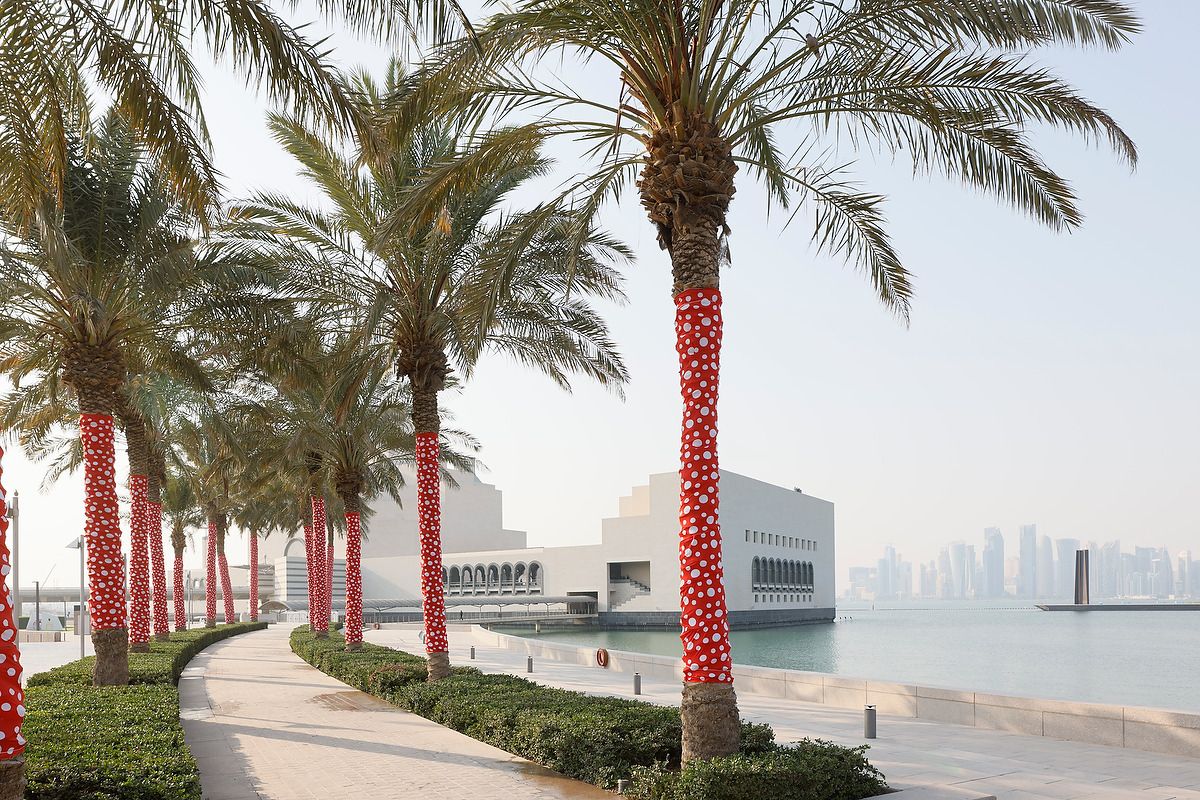From a giant inflatable sea creature by Jeff Koons to Olafur Eliasson's installation of mirrored shelters in the desert, the run-up to the Fifa World Cup 2022 in Qatar has the small Gulf state busy unveiling a raft of ambitious public art commissions.
In a statement, the chair of Qatar Museums (QM), Sheikha Al Mayassa bint Hamad bin Khalifa Al Thani, describes public art as “one of our most prominent demonstrations of cultural exchange, where we present works from artists of all nationalities and backgrounds”. Over the past decade, QM has installed some 70 monumental pieces by international, regional and local artists in public spaces from the airport to the Doha souq. The programme is ramping up to more than 100 works in time for the World Cup (20 November-18 December), when an estimated 1.5 million football fans are expected to descend on the country (population: 2.9 million).
Here, we look at seven of the new installations that make up Qatar’s “vast outdoor art museum experience” in the capital and beyond.

© Iwan Baan
Ugo Rondinone, Doha Mountains (2022), Ras Abu Aboud beachfront near 974 Stadium, Doha
Ugo Rondinone’s modern megaliths are a day-glo take on the five colours of the Olympic rings—a nod perhaps to Qatar’s long-held dream of hosting the Olympic Games. The Swiss artist’s signature rock stacks have taken up residence at the newly developed beach near another colourful structure: the 974 Stadium, an assemblage of 974 shipping containers that will be dismantled after the World Cup.
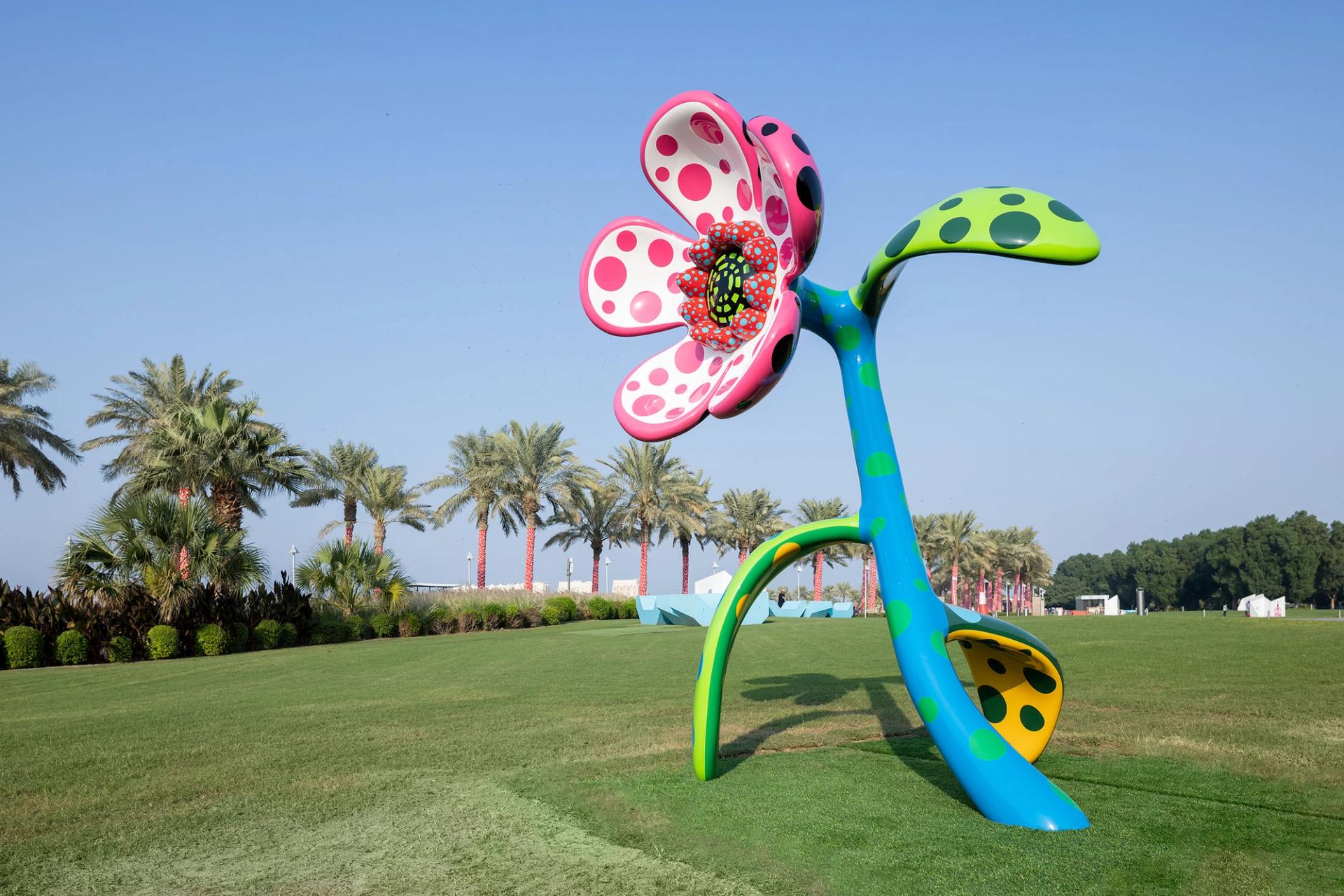
Yayoi Kusama's Flowers That Speak All about My Heart Given to the Sky (2018). Installation view, My Soul Blooms Forever, Museum of Islamic Art, Doha, Qatar Photo by Iwan Baan. Artwork © YAYOI KUSAMA. Courtesy David Zwirner, Ota Fine Arts, and Victoria Miro.
Yayoi Kusama sculptures and installations in MIA Park, Doha
The polka-dot-wrapped palm trees that line the sweeping waterfront outside the newly revamped I.M. Pei-designed Museum of Islamic Art (MIA) are unmistakably the work of Yayoi Kusama. The temporary installation by the dot-obsessed Japanese artist in MIA Park also includes one of her psychedelic oversized sculptures of flowers, a recurring motif that harks back to her childhood hallucinations.
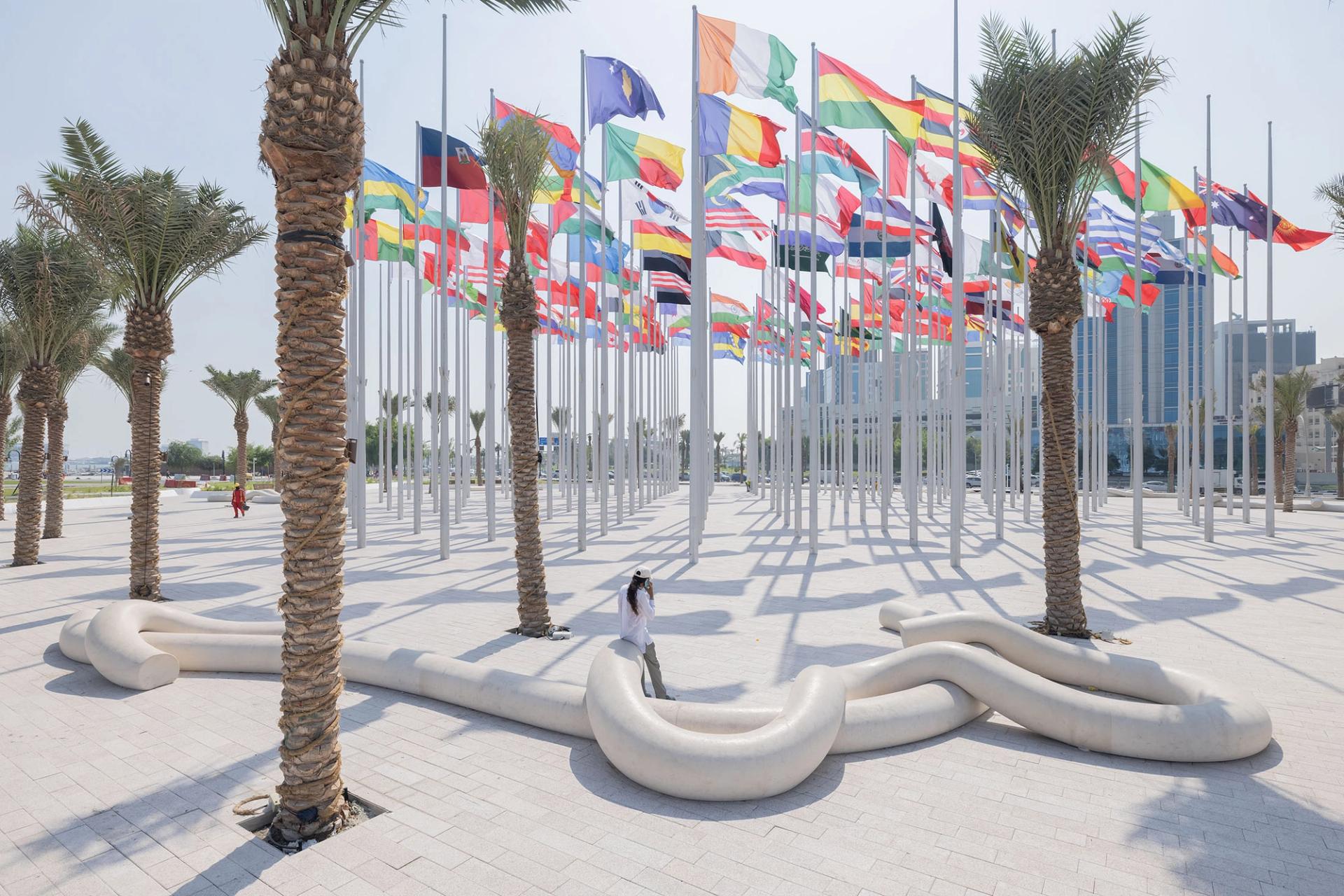
© Iwan Baan
Najla El Zein, Us, Her, Him (2022), Flag Plaza, Doha
Lebanese artist Najla El Zein worked through the pandemic with a team of stone carvers in Beirut to produce this site-specific installation stretching for more than 300 metres around Doha’s recently created Flag Plaza. The sinuous, interlacing limestone forms reflect ideas of human connection and collectivity and double up as public benches, inviting people to rest and gather.
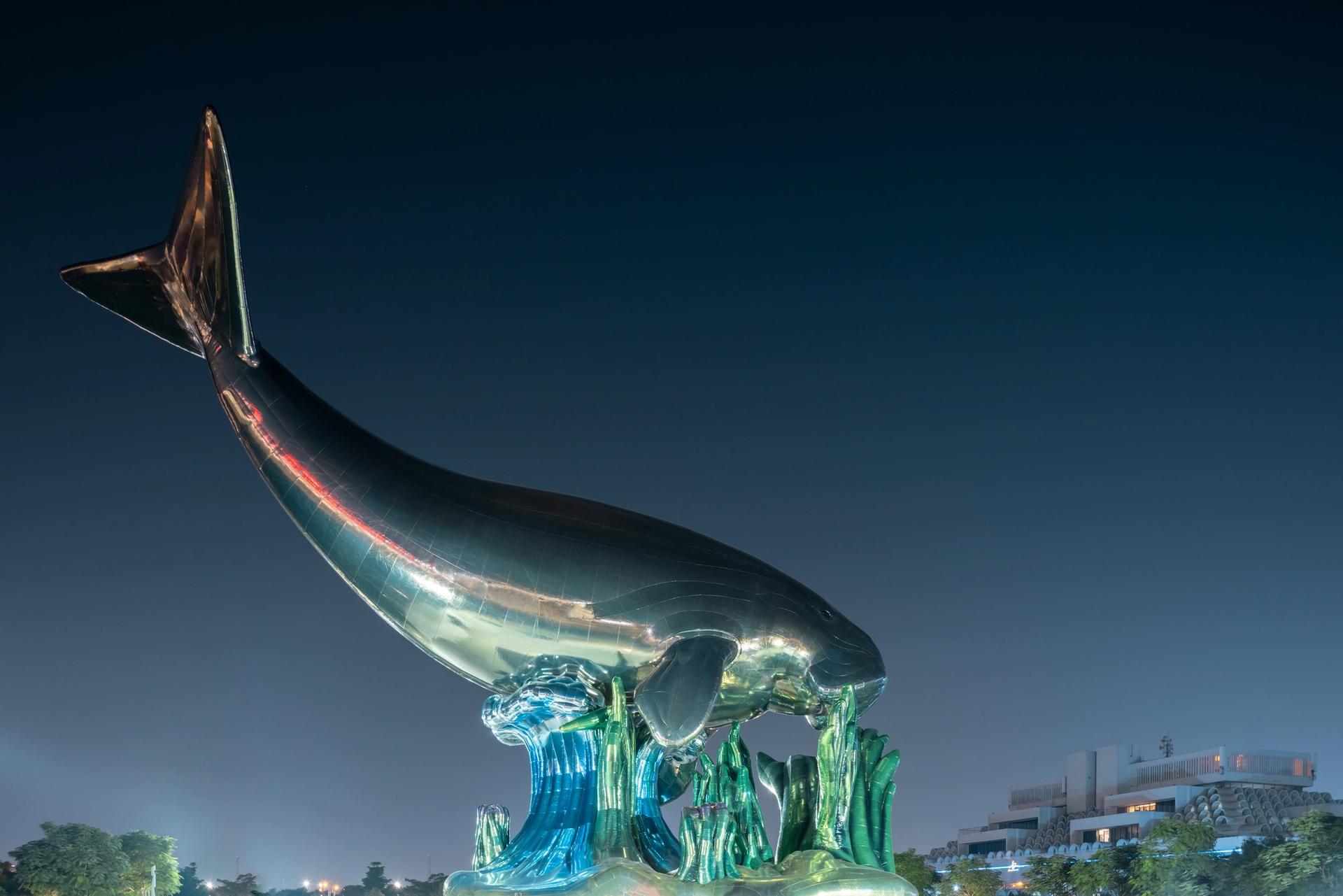
© Iwan Baan
Jeff Koons, Dugong (2022), Al Masrah Park, Doha
Jeff Koons’s shiny inflatable, towering more than 20 metres high and 30 metres long over Doha’s Corniche, takes the form and the name of an endangered marine mammal that has inhabited the Gulf’s waters for thousands of years. Dugong will remain in place for around six months as a symbol of the need to protect Qatar’s wildlife.

Courtesy of Qatar Museums
Shezad Dawood, Doha Modern Playground (2022), Al Masrah Park, Doha
Steps away from Koons’s Dugong is Shezad Dawood’s playground, where children can climb over structures inspired by the city’s post-independence Modernist architecture. The catalyst for the project was the pyramidal Sheraton Hotel designed by William Pereira in 1982, the earliest building in what is now the crowded skyline of Doha’s West Bay business district.
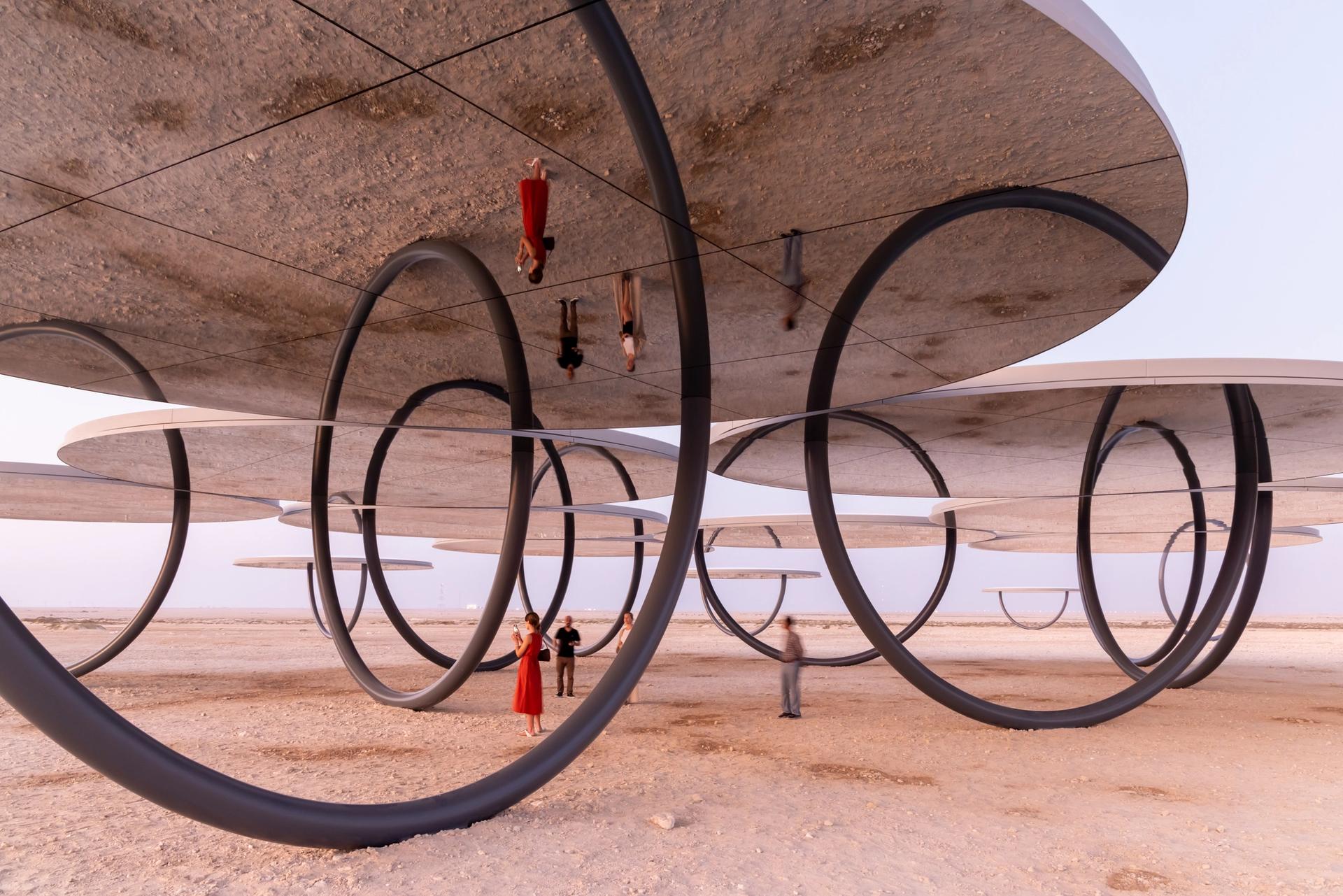
Courtesy of the artist; neugerriemschneider, Berlin; Tanya Bonakdar Gallery, New York / LosAngeles. © 2022 Olafur Eliasson Photo: Iwan Baan
Olafur Eliasson, Shadows travelling on the sea of the day (2022), near Al Zubarah Fort and Ain Mohammed
Speaking in Doha last week, Olafur Eliasson likened his cluster of mirrored disc sculptures in the desert to the form of Bedouin settlements. Visitors will have to journey for more than an hour by road and then on foot to reach the work, set within the rugged landscape beyond the northern heritage sites of Al Zubarah Fort and Ain Mohammed. Those lingering at dusk will be rewarded with the heightened experience of the light changing around the monumental sculptures and (as per the work’s title) their shadows travelling across the earth. Eliasson describes the installation as “an invitation to resync with the planet”.

Photo by Iwan Baan; Courtesy Tanya Bonakdar Gallery, New York and Los Angeles; Fortes D’Aloia & Gabriel, São Paulo e Rio de Janeiro
Ernesto Neto, Slug Turtle, TemplEarth (2022), near Al Zubarah Fort and Ain Mohammed
Brazilian artist Ernesto Neto’s crochet environment, also located in the northern desert, invites visitors to enter inside an octagonal football goal with a ceramic globe at its centre. Open to the elements, it is intended as a place of meditation and communion: between human beings and the desert and between people of different nations.


